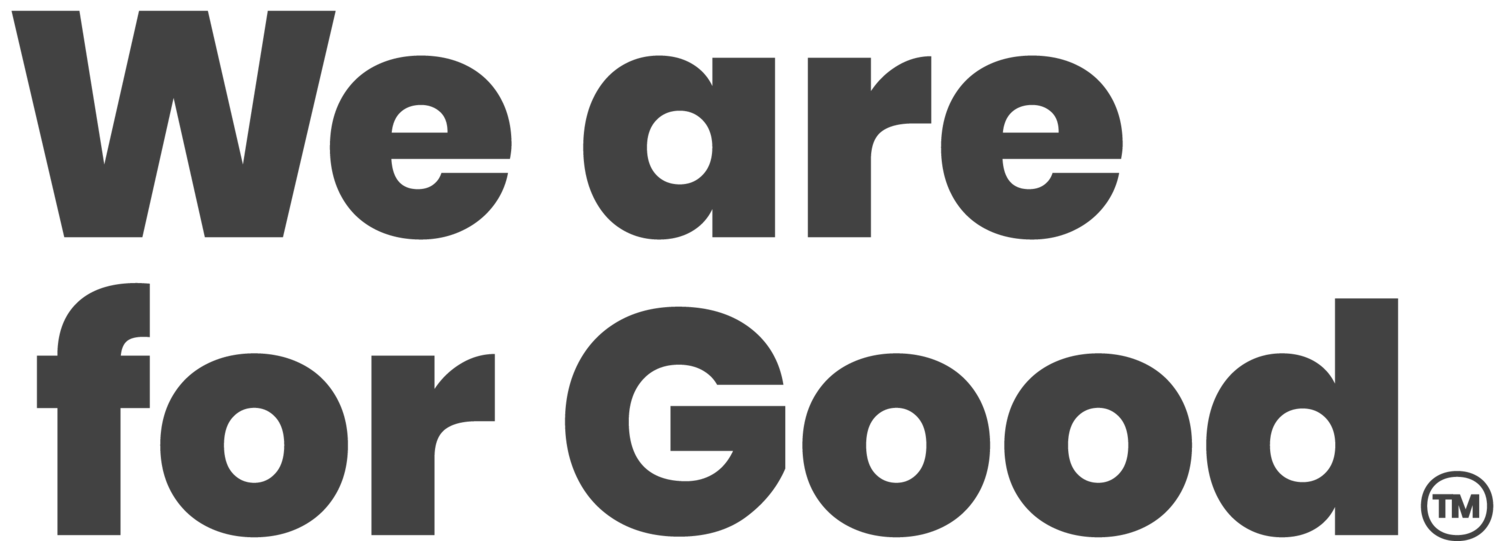The Role of Entrepreneurship in Nonprofit Operations
Nonprofits face an immense amount of pressure to spend as much revenue as possible on their missions. In theory, you’re expected to put every spare penny directly into the cause without a second thought for your own operations. But the reality is that you are hurting your nonprofit’s ability to operate by not investing in your own organization.
While your ultimate goal should be to forward your mission, adopting a more business-oriented growth mindset when dealing with overhead and the allocation of funds will ensure that your organization is able to function as effectively as possible. After all, your nonprofit is no good to the causes you’re supporting if you shut down after just a few years of operation.
For example, take a look at a few of the essential ways that entrepreneurship can uplift your nonprofit’s operations:
Supporting operational sustainability
Stimulating long-term organizational growth
Increasing security for your assets
Building donor and stakeholder trust
Adopting a healthy, business-minded approach doesn’t mean pocketing your donors’ gifts or shunning your mission for the sake of personal gain. Instead, we encourage you to shake off these stereotypes and look at the ways that a bit of business-savvy investment can actually ensure that you are able to work towards your cause as efficiently as possible.
From embarking on new and exciting avenues of social giving and virtual-native fundraising to investing in your dedicated employees, our hope is that these entrepreneurial insights will give you the freedom and success to better fight for the causes that you care about.
Supporting operational sustainability
No organization, from a business to a nonprofit, can sustain itself without investing revenue into its projects, operations, and staff. You may want to end food insecurity in your area or rehome abandoned puppies in your state, but to keep the lights on you’ll need to start thinking about ways that you can allocate funds to your organization’s internal operations.
True, major gifts are often restricted and need to be honored and used for specific purposes. But most minor donations will go directly into your annual fund, which can be used to enrich your organization.
For example, Challenges on Facebook (Meta), a type of social giving via peer-to-peer fundraising campaign, can be a major source of incoming revenue to contribute to your annual fund. These campaigns are shared between thousands of supporters to create a groundswell of support and gifts for your nonprofit.
The massive number of small, collective gains made from such a campaign could then be put towards projects that will help to sustain your organization for the long-run, such as:
More efficient methods of fundraising
Employee salaries and resources
Office space
Professional consultation
The creation of new departments
For instance, many smaller nonprofits do not have a marketing team. This makes it difficult to effectively expose their organization, and thus the wider mission they’re working towards, to new and wider audiences.
This is where campaigns such as Challenges on Facebook (Meta) and social giving can be an entrepreneurial boon for your organization, giving you a wealth of flexible resources to allocate towards professional marketing services that can give your nonprofit the exposure it needs to succeed.
Stimulating long-term organizational growth
An essential part of entrepreneurship is to be brave, be bold, and take the leap into trailblazing new projects that stimulate long-term organizational growth.
Take, for instance, the social giving method we previously mentioned: Challenges on Facebook (Meta).
GoodUnited’s guide to social giving provides a blueprint for how these special fundraising campaigns operate and how they can be used to stimulate long-term supporter engagement, which goes as follows:
Select a Challenge activity, such as walking X number of miles or volunteering X number of hours in a fixed time period
Organize a Facebook (Meta) group for participants to join, build a community, and update fellow supporters on their progress as friends and family make pledges towards their goal
Leverage paid Facebook (Meta) ads to get the word out about your fundraiser and direct interested users to sign up for your Challenge and its dedicated Facebook (Meta) group
Thank your supporters to commend them on their hard work and motivate them to complete their goals
Engage supporters in the group, reaching out individually and more broadly to issue campaign updates, shout outs, and conversations that will keep supporters connected and passionate about your cause
These “time-bound” fundraisers are just one shining example of a bold, entrepreneurial venture that you could take to stimulate new routes of incoming revenue and create long-lasting spaces for supporter engagement and community-building.
Some organizations are hesitant to put money into a new fundraising avenue that they've never tried before, but as any entrepreneur will tell you, you must take new risks to reap great rewards.
Just take a look at how the American Cancer Society leveraged this exact fundraising method, to great success.
In the midst of a pandemic that was sure to ruin their annual fundraising plans and decimate their annual fund, ACS partnered with a social fundraising services provider to invest in a new, innovative fundraising method. Through their intuitive, savvy Challenges on Facebook (Meta), ACS was able to break fundraising records on Facebook (Meta), avoid expected financial losses, and exceed every expectation they had set for donor acquisition and fundraising revenue during a time of turmoil.
And with the same eye for new and bold approaches to your fundraising and donor engagement strategies, you might just be able to emulate the same success.
Increasing security for your assets
Thinking big and investing funds back into your own organization can go towards more than just generating larger opportunities for revenue. You can also invest these funds into protecting the revenue that you’ve already gained.
For example, you might opt for a more secure nonprofit payment processor to encrypt and protect donor data and donations from fraud. Or you might invest in an SSL certificate to enable an encrypted connection for users navigating your website.
These forward-thinking security measures aren’t just for your peace of mind—they can create significant benefits to your organization in the following ways:
Reinforce donor loyalty and faith
Exude professionalism and boost public regard
Prevent scandals and fraud-related reputational losses
Protect your organization from unnecessary financial windfall
To achieve these benefits, Bloomerang’s article on nonprofit cybersecurity fleshes out this subject even further with actionable defenses that you can adopt to fortify your organization’s security:
Review and update password protocols
Invest in secure software, such as software changelogs and PCI-compliant systems
Keep pace with security updates for your software
Carefully manage the permissions on your user accounts
Invest in VPNs and firewalls
These measures will provide a foundation for you to build up preemptive security measures that will protect your organization from malicious attacks. This is especially important as your organization grows, gains more revenue, and rises into the public eye.
Faith and goodwill may be the bedrock of the nonprofit sector, but the continued success of your organization depends on a bit of healthy skepticism and the implementation of these forward-thinking strategies.
Building donor and stakeholder trust
Consider how the intersection of all of the entrepreneurial strategies we have discussed—promoting sustainability, stimulating growth, and fortifying security—will affect the overall public image of your nonprofit.
A sustainable, growing, and secure organization is far more likely to inspire donor faith and stakeholder trust than an organization that is struggling to make it through each year and uses outdated, poor software solutions to facilitate its operations.
With an entrepreneurial attitude towards the growth and fundraising success of your organization, you can invest in programs, events, technology, and opportunities that will increase public confidence in your organization.
For example, successfully executing a robust capital campaign is a great opportunity for you to show off your organization’s efficiency and instill greater public trust in your operations. These fast fundraising initiatives are a high-risk, high-reward investment that will single you out as a daring, trailblazing presence in the nonprofit sector.
This is not only important for your wider base of donors, who might be comfortable and familiar with donating to smaller fundraising organizations like their local schools or community organizations. Proving that your organization is powerfully functioning and able to create significant change through your various programs is also important for collecting major donors and securing important grants.
Your organization can still operate as a force for social change and good while investing funds into itself. If anything, these self-investments will help you to more efficiently complete your work, improve your nonprofit’s fundraising strategy, optimize donor engagement techniques, and increase overall operations across your organization.
For the good of your cause, your organization, and the dedicated staff members who work to support your organization, think big and don’t be afraid to tackle new and exciting avenues for your future success.
Nick Black, CEO of GoodUnited
Nick Black, CEO of GoodUnited
Nick is the Founder and CEO of GoodUnited, a venture backed Software as a Service (SaaS) startup that helps nonprofits like Wounded Warrior Project, American Cancer Society, World Wildlife Fund create 1:1 relationships with their donors through the combination of data science and human judgement delivered in conversational messaging platforms. Nick's work with GoodUnited resulted in being named The University of North Carolina at Chapel Hill’s 2017 Distinguished Young Alumnus.
Nick has been an innovator and leader at the intersection of business and social impact for over ten years. The concept for GoodUnited came through Nick's work co-founding and leading Stop Soldier Suicide, a 501c3 that grew from startup to national leader in reducing veteran suicide to the national average in ten years. Stop Soldier Suicide’s growth and impact resulted in Nick being selected as a Presidential Leadership Scholar and a Leadership North Carolina Fellow.
Nick co-founded Stop Soldier Suicide stemming from his experiences leading Paratroopers as a Ranger qualified Army Officer with the 173rd Airborne during 27 months deployed to combat zones in Afghanistan. During Nick's six years of service he was awarded two Bronze Stars, an Army Commendation Medal for Valor and as a Field Artillery Officer, was repeatedly ranked 1st among 50 peer Officers in a premier Infantry Battalion.
Nick received a BA from The Johns Hopkins University. At Johns Hopkins, Nick was a four-year member of the Varsity football team, the first two-time President of Alpha Delta Phi Fraternity and a four-year scholarship winner of the Army ROTC program. Nick received an MBA from Kenan-Flagler Business School at the University of North Carolina. At Kenan-Flagler, Nick was awarded the Rollie Tillman Award for Leadership, selected as a Kenan Institute Leadership Fellow, was President of the Veterans Club and awarded the 2018 Distinguished Young Alumnus
Nick lives in Charleston South Carolina with his wife Amanda. Amanda and Nick have a five-year-old daughter and four-year-old son.
Nick Black, CEO of GoodUnited
Nick is the Founder and CEO of GoodUnited, a venture backed Software as a Service (SaaS) startup that helps nonprofits like Wounded Warrior Project, American Cancer Society, World Wildlife Fund create 1:1 relationships with their donors through the combination of data science and human judgement delivered in conversational messaging platforms.


